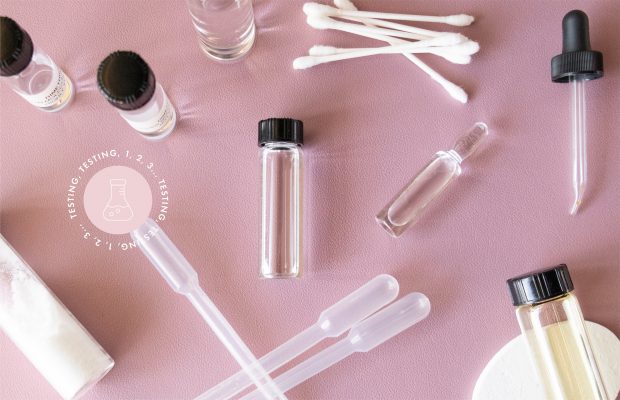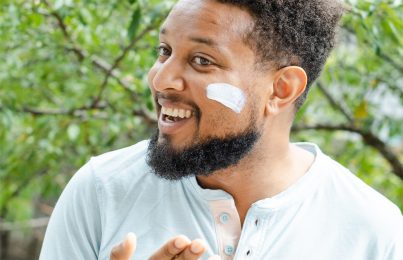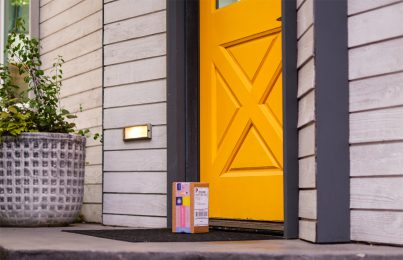Product safety is a huge topic of conversation among beauty consumers. And listen, I get it— there are so many products out there, it can be hard to understand how they’re all regulated. In addition, recent reports of the contaminant benzene being found in some sunscreen threw people for a loop.
In this post, I want to take some time to explain how your products are regulated, how they’re tested, and why you can ultimately rest assured knowing people are going to great lengths to ensure what you put on your skin is safe.
How the FDA Regulates Cosmetics
There’s a lot of confusion about how the FDA is involved in overseeing the cosmetics industry. When it comes to cosmetics, the FDA focuses on regulation versus approval. This means that a cosmetic product doesn’t have to be pre-approved by the FDA before it’s brought to market, but it does have to comply with FDA laws and guidelines. Ultimately, there are two major criteria a product must meet in order to be sold to consumers:
- Packaging claims must be substantiated. Meaning, what it says on the bottle is what has to actually be in the bottle. And, if a product makes certain marketing claims, those have to be substantiated. This is enforced by the Fair Packaging and Labeling Act, which requires your packaging and advertising information to accurately represent your product.
- The product has to be safe. This one is pretty self explanatory—a product can’t be harmful to consumers in any way. This is enforced by the Federal Food, Drug, and Cosmetic Act, which states products can not be adulterated (contaminated), misbranded (falsely labeled or misleading), and otherwise are compliant with FDA guidelines.
Aside from these laws, the FDA also has a set of guidelines called Good Manufacturing Practices. These are guidelines that need to be followed when manufacturing a product to make sure they’re safe.
Ultimately, the burden of testing lies with the brand or manufacturer. It’s their responsibility to prove their product meets all of the FDA’s criteria. This does mean a brand needs to know what they’re doing, so I think the ever-growing trend of brand transparency is great. It allows you, as a consumer, to make the best decisions about which companies you buy from.
That said, failure to comply with FDA regulations can result in a recall of a product or very expensive litigation, so understand that companies are very motivated to do the necessary testing so they can back their products. (In Europe, pre-approval is required in order for a product to go to market, and the governing body that approves it absorbs responsibility for any possible litigation.) Additionally, putting out something that hurts customers is bad for business! Most brands, manufacturers, and chemists have good intentions and work diligently to make sure the products they put out are safe. It’s almost unheard of for someone to put a product out without proper safety testing.
Speaking of safety testing, the cosmetics industry in the U.S. has developed a lot of its own standardized testing for proving safety and efficacy. Keep reading for what’s being done to ensure your products meet safety standards.
How Skincare Products are Tested for Safety and Efficacy Before Being Brought to Market
These are tests that can be performed on product formulas to ensure their safety and efficacy. We get our testing done through our trusted lab partners and stay in close communication with them to monitor results and make sure we’re always putting out safe, high-quality products.
Preservative Efficacy Testing (PET)
PET is a one-time test done on cosmetic formulas to prove they can withstand contamination by microorganisms. The product is purposefully contaminated with six common types of microorganisms (three bacteria, fungus, yeast, and mold). A technician then measures the number of microorganisms left in the product over a certain period of time. Ideally, at the end of the test, there would be nearly nothing left. This test is required under the FDA’s Good Manufacturing Practices.
Why It’s Needed
Cosmetics aren’t sterile when they’re produced, and once you take them home you might introduce contamination to the product when you use it or store it in moist conditions (like a bathroom or shower). To make sure harmful organisms don’t grow, preservatives are essential. This is one reason I’m not a fan of green or “clean” beauty, since it often means foregoing a traditional preservative system.
Microbial Testing
Instead of a one-time test like PET testing, microbial testing is done each time a new batch of product is made. This is to make sure that, before products are sent to retailers or customers, there are no harmful microorganisms. This test is required under the FDA’s Good Manufacturing Practices.
Why It’s Needed
Products can be contaminated during the manufacturing or filling process, and this test ensures they’re safe before being shipped out
Stability Testing
Stability testing is essentially used to determine the shelf-life of a product. It ensures that, over a certain period of time, the product will look the same (i.e. no shift in color or texture) and that the chemical properties won’t shift. The most common type of stability testing is called “accelerated stability.” Over the course of three months, a product is exposed to several different temperature conditions. Three months of stability in the test translates to two years of stability in the real world, meaning the product will have a two-year shelf life. If it’s a product that’s considered a drug (like sunscreen), this test is used to determine the expiration date.
Why It’s Needed
It’s important to understand the integrity of a product over time. Selling an unstable product means consumers might not be getting what they paid for. This is especially true for active ingredients, like vitamin C or retinol, that might be unstable on their own. They need to be properly stabilized in a formula otherwise they won’t be effective or give consumers the benefits they’re meant to.
Human Repeat Insult Patch Testing (HRIPT)
This test measures whether or not people are likely to experience an allergic reaction or irritation from a product. Subjects with varying skin types have the product applied to the same patch of skin over and over, and someone analyzes their skin each time for possible irritation. For an extra fee, a dermatologist can review the data to get their stamp of approval. This allows a brand to market the product as “dermatologist tested” or “dermatologist approved.” The HRIPT test is also required if you want to label the product as hypoallergenic.
As you can see, a lot of the claims that come from this test have to do with marketing. Learn more about marketing terms in skincare and what they actually mean.
Why It’s Needed
Though this test isn’t required, it’s a good idea if a brand wants to minimize the risk of an allergic reaction for their consumers. As I mentioned, it’s also necessary if they want to make certain claims about their product in regards to sensitive skin. Keep in mind that there is no such thing as “zero risk,” and a product might cause irritation for certain consumers even if it’s been through HRIPT. Again, this test simply minimizes the risk.
Claims Testing
A “claim” is what a company says a product does. This may seem obvious, but it’s important because of the FDA law requiring that products live up to their claims. This type of testing is more about efficacy than safety, and the exact type of test or study depends on the claim being made. For example, if a product claims to improve dark under-eyes, they need to substantiate that.
Why It’s Needed
Failure to substantiate product claims violates FDA guidelines and can result in a warning, fine, or even litigation.
Ophthalmologist Testing
This is usually done at a third-party facility that specializes in this type of testing. A product is applied in or around the eye under the supervision of an ophthalmologist. This is how tear-free testing is done on baby shampoo, for example. If a product doesn’t undergo this type of testing, the packaging simply has to carry a warning that says if it gets in your eyes to rinse them thoroughly.
Testing and Safety of Individual Ingredients
So far we’ve only touched on how cosmetic products are tested, but before that even happens, most of the ingredients themselves have been tested and studied at length. The reality is there aren’t a lot of truly new or groundbreaking ingredients being used in skincare, so the safety data we have for most ingredients goes back decades.
Ingredients are extensively tested by their manufacturers, and in order to be used in cosmetic products, they have to be vetted through the Cosmetic Ingredient Review Board (CIR). This is a board of independent scientists who review safety studies from both academic and industry sources. They also review toxicology testing and how ingredients are being used in formulas (especially the percentages at which ingredients are used). Toxicology testing isn’t required in the U.S., but some manufacturers will still do it. It is, however, required in the E.U., and the CIR takes the E.U. reviews and recommendations into consideration. In the end, the board assigns each ingredient a safety rating.
As you can see, there’s a lot that goes into ensuring the efficacy and, most importantly, the safety of your products. I hope this post gave you a sense of all the work going on behind the scenes.
Celebrity Esthetician & Skincare Expert
As an esthetician trained in cosmetic chemistry, Renée Rouleau has spent 30 years researching skin, educating her audience, and building an award-winning line of products. Her hands-on experience as an esthetician and trusted skin care expert has created a real-world solution — products that are formulated for nine different types of skin so your face will get exactly what it needs to look and feel its best. Trusted by celebrities, editors, bloggers, and skincare obsessives around the globe, her vast real-world knowledge and constant research are why Marie Claire calls her “the most passionate skin practitioner we know.”



